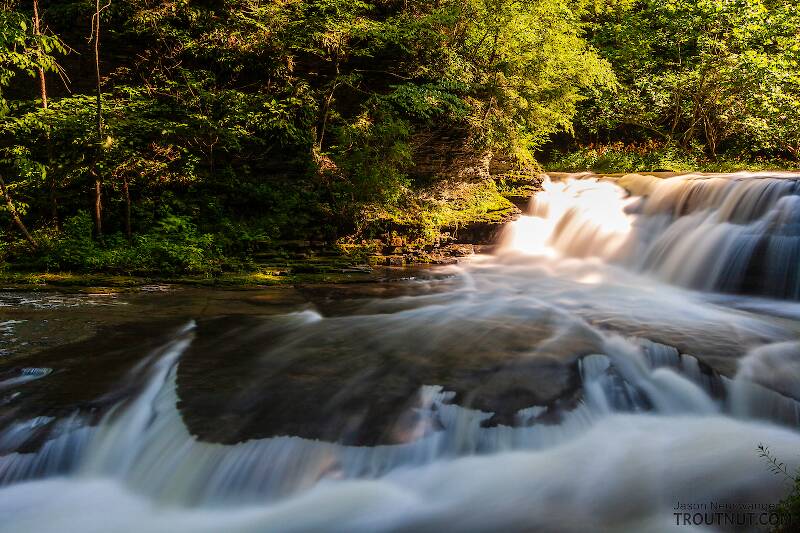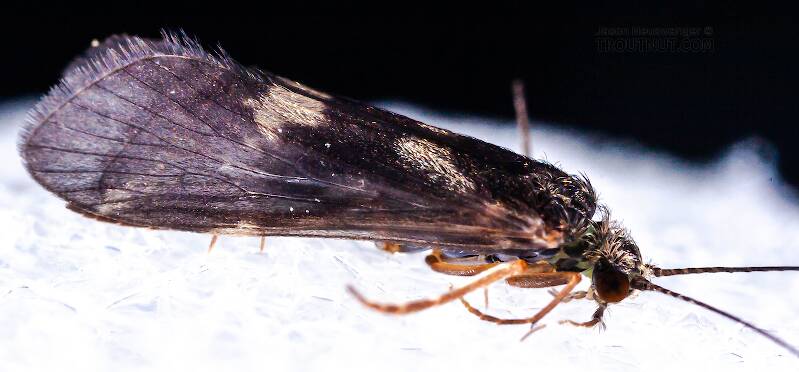
Blue-winged Olives
Baetis
Tiny Baetis mayflies are perhaps the most commonly encountered and imitated by anglers on all American trout streams due to their great abundance, widespread distribution, and trout-friendly emergence habits.
Featured on the forum

This dun emerged from a mature nymph on my desk. Unfortunately its wings didn't perfectly dry out.

Troutnut is a project started in 2003 by salmonid ecologist Jason "Troutnut" Neuswanger to help anglers and
fly tyers unabashedly embrace the entomological side of the sport. Learn more about Troutnut or
support the project for an enhanced experience here.
GONZO on Oct 6, 2006October 6th, 2006, 5:56 am EDT
Really cool pictures, Jason. My first impression was classic Cheumatopsyche (Little Sister Sedge), and I can't find anything to indicate otherwise--size, color, maxillary palp, and wing all seem right on. Wish I could help with the species, but with many caddisflies I'm happy just to get the genus right. :)
It is interesting to note that some books say that the coloring of many Cheumatopsyche species gets lighter as the season progresses. That certainly doesn't seem to be the case here.
It is interesting to note that some books say that the coloring of many Cheumatopsyche species gets lighter as the season progresses. That certainly doesn't seem to be the case here.


